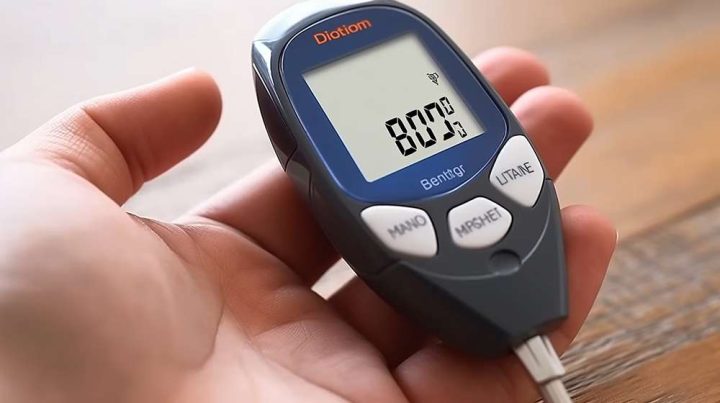Ever wondered if you could reverse prediabetes in just three months? Imagine taking control of your health and making a significant change in a short amount of time. What if I told you it’s possible to turn the tide on prediabetes within 90 days?
In this post, we will explore practical strategies and lifestyle adjustments that can help you combat prediabetes effectively. From dietary changes to exercise routines, we’ve got you covered with actionable steps to kickstart your journey towards better health.
Stay tuned for expert tips and insights on how to tackle prediabetes head-on and reclaim your well-being.
Understanding Prediabetes
Understanding Prediabetes
Prediabetes is a condition where blood sugar levels are higher than normal, indicating an increased risk of developing type 2 diabetes. Recognizing the definition of prediabetes is vital as it serves as a warning sign for potential diabetes development. By understanding this, individuals can take proactive steps to reverse the condition before it progresses.
Being overweight or leading a sedentary lifestyle elevates the chances of developing prediabetes. Having a family history of diabetes can also heighten susceptibility to prediabetes. These risk factors underscore the importance of adopting healthier habits and making positive lifestyle changes to combat and reverse prediabetes effectively.
Risk Factors
-
Being overweight or obese increases risk
-
Lack of physical activity contributes
-
Family history plays a role in susceptibility
Prediabetes often manifests without noticeable symptoms, emphasizing the necessity for regular screenings. While some individuals may experience increased thirst and frequent urination with prediabetes, others could encounter fatigue and blurred vision as potential indicators. Understanding these subtle signs aids in early detection and intervention to prevent further progression towards type 2 diabetes.
Symptoms
-
Regular screenings are crucial
-
Increased thirst and frequent urination possible
-
Fatigue and blurred vision may indicate prediabetes
Diagnosing prediabetes involves various tests such as HbA1c, which measures average blood sugar levels over months; Fasting plasma glucose (FPG) test; Oral glucose tolerance test (OGTT). These diagnostic tools help healthcare providers identify individuals at risk accurately so that appropriate interventions can be implemented promptly.
Diagnosis
-
HbA1c measures average blood sugar levels.
-
Fasting plasma glucose (FPG) test detects elevated levels.
-
Oral glucose tolerance test confirms diagnosis when needed.
Importance of Reversing Prediabetes
Health Risks
Prediabetes, a condition with elevated blood sugar levels, can lead to serious health issues. It escalates the risk of cardiovascular diseases like heart attacks and strokes. If not managed, it heightens the likelihood of developing type 2 diabetes within five years. Prediabetes is linked to complications such as kidney disease and nerve damage.
To illustrate further, imagine your body as a car engine that needs proper fuel to function well. When you have prediabetes, it’s like putting contaminated fuel in the tank – eventually causing damage if not addressed promptly. Similarly, untreated prediabetes can harm vital organs over time if left unchecked.
Long-term Effects
If left unattended, prediabetes can progress into type 2 diabetes requiring lifelong management. The prolonged effects of uncontrolled prediabetes include severe complications like neuropathy (nerve damage) and retinopathy (eye problems). By actively working on reversing prediabetes through lifestyle changes or programs like the Diabetes Prevention Program (DPP), individuals significantly lower their chances of experiencing these long-term consequences.
Think about it this way: addressing prediabetes early is akin to fixing a leaky roof before it causes extensive water damage inside your home. Taking action now can prevent more significant problems down the road.
7 Potential Ways to Reverse Prediabetes in 3 Months
This insightful blog post offers a practical and evidence-based approach to reversing prediabetes within just three months.
1) Nutrition Adjustments
Healthy Carbs
Choosing complex carbohydrates like whole grains, legumes, and vegetables over refined carbs is crucial. These healthy carb options are rich in nutrients, fiber, and release glucose into the bloodstream slowly. Managing blood sugar levels effectively involves striking a balance with your carb intake to reverse prediabetes. For instance, opting for brown rice instead of white rice or choosing quinoa over regular pasta can make a significant difference in managing prediabetes.
Consuming fruits, vegetables, whole grains, and legumes can help increase your fiber intake. Fiber plays a vital role in regulating blood sugar levels and enhancing insulin sensitivity. To support the reversal of prediabetes effectively, aim to incorporate at least 25 grams of fiber into your daily diet. For example, adding more leafy greens to salads or snacking on nuts and seeds throughout the day can be simple ways to boost your fiber consumption.
Limit Sugars
Reducing the consumption of sugary beverages, processed foods high in added sugars is essential when aiming to reverse prediabetes within three months. Excessive sugar intake not only contributes to weight gain but also worsens insulin resistance—opt for natural sweeteners like stevia or monk fruit extract as healthier alternatives that won’t spike blood sugar levels drastically.
Hydration plays a critical role in supporting overall health while aiding in controlling blood sugar levels effectively during the process of reversing prediabetes within three months. Opting for water as the primary source of hydration is ideal; steer clear from sugary drinks that can negatively impact blood sugar control.
2) Physical Activity Increase
Aerobic Exercise
Aerobic exercises like brisk walking, jogging, or cycling can enhance physical health by boosting insulin sensitivity. Strive for 150 minutes of moderate-intensity aerobic activity weekly to lower blood sugar levels and aid in weight loss. By incorporating regular aerobic exercise into your routine, you can significantly improve your overall physical well-being.
Engaging in strength training activities such as weightlifting or bodyweight exercises is crucial for improving physical health. Building muscle mass not only enhances insulin sensitivity but also elevates metabolic rate. Ensure to include two or more sessions of strength training per week to maximize the benefits on your journey to reversing prediabetes within three months.
Flexibility Workouts
Flexibility workouts like stretching and yoga play a vital role in enhancing physical health by improving mobility and reducing stress levels. These exercises complement aerobic and strength training routines, contributing to an overall improvement in physical well-being. Prioritize flexibility workouts alongside other forms of exercise to achieve optimal results in combating prediabetes effectively.
3) Weight Management
BMI Understanding
Body Mass Index (BMI) is crucial in evaluating weight and potential health risks. Knowing your BMI helps determine if you’re at a healthy weight or overweight. Maintaining a healthy BMI plays a significant role in managing prediabetes. By understanding body weight through BMI, individuals can assess their risk factors for developing prediabetes. This simple calculation considers height and weight to provide insight into one’s overall health status.
Fat Loss Strategies
To reverse prediabetes, focus on creating a calorie deficit by combining diet and exercise to promote fat loss effectively. Incorporating whole foods, practicing portion control, and mindful eating habits daily are key strategies for losing excess body fat. Sustainable approaches to weight loss contribute significantly to reversing prediabetes within three months. For instance, reducing calorie intake while increasing physical activity levels aids in achieving sustainable fat loss targets.
Monitoring Progress
Regularly monitoring blood sugar levels using glucose meters or continuous glucose monitors (CGMs) is essential when aiming to reverse prediabetes within three months successfully. Keeping track of changes in physical activity, dietary habits, and progress with weight management allows individuals to identify trends promptly and make necessary adjustments along the way. Tracking progress not only helps monitor improvements but also guides individuals towards adopting more effective strategies tailored to their needs.
4) Sleep Quality Improvement
Sleep Duration
Aim for 7-9 hours of quality sleep each night to support your health and hormone balance. Inadequate sleep can impact insulin sensitivity and raise the risk of diabetes development. Prioritize adequate sleep as a crucial component of your plan to reverse prediabetes.
To enhance your chances of reversing prediabetes, focus on establishing a regular sleep pattern. Go to bed and wake up at the same time daily to improve your body’s internal clock. By maintaining consistency in your sleep routine, you can promote better overall health and hormonal regulation.
Sleep Hygiene
Create a calming bedtime ritual that encourages relaxation before sleep. Engaging in activities like reading or gentle stretching before bed can signal to your body that it’s time to wind down. Avoid screens emitting blue light close to bedtime as they can disrupt melatonin production.
Optimize your sleeping environment by ensuring it is conducive to restful slumber. Keep the room dark, quiet, and cool for an uninterrupted night’s rest. Investing in comfortable bedding and pillows can also contribute significantly to improving the quality of your sleep.
5) Stress Management Techniques
Mindfulness
Mindfulness techniques like meditation and deep breathing exercises are powerful tools to combat stress. By incorporating mindfulness into your daily routine, you can significantly reduce stress levels. This practice not only improves emotional well-being but also supports healthier lifestyle choices. For individuals looking to reverse prediabetes in 3 months, mindfulness plays a crucial role in managing the condition effectively.
Consider setting aside a few minutes each day for mindfulness activities such as meditation or deep breathing exercises. These practices can help calm the mind, lower stress hormones, and promote relaxation. When integrated consistently into your routine, mindfulness can positively impact blood sugar control and contribute to overall prediabetes management.
Breathing Exercises
Deep breathing exercises offer an effective way to trigger the body’s relaxation response and counteract stress hormones. Techniques like diaphragmatic breathing or box breathing are simple yet potent methods for reducing stress levels. Regular practice of these breathing exercises can lead to improved blood sugar regulation, which is essential for individuals aiming to reverse prediabetes within three months.
To leverage the benefits of breathing exercises fully, try incorporating them into your daily schedule at strategic times when you feel stressed or overwhelmed. Whether it’s taking a minute before meals or during breaks at work, these moments of focused breathing can have a profound impact on your well-being and blood sugar levels.
6) Regular Health Check-ups
Blood Sugar Monitoring
Regularly check blood sugar levels using home testing kits or devices recommended by healthcare professionals. Monitor how different foods, activities, and lifestyle changes affect blood sugar levels. This monitoring helps you understand the impact of your choices on your health.
Blood sugar monitoring provides valuable insights for managing prediabetes. For example, if you notice that certain foods consistently spike your blood sugar levels, you can adjust your diet accordingly to maintain stable readings. By tracking these trends over time, you can make informed decisions about what works best for your body.
Doctor Visits
Schedule regular check-ups with your healthcare provider to monitor your prediabetes reversal progress. Discuss any concerns or questions regarding medications, lifestyle modifications, or treatment plans during these visits. Your doctor is a crucial partner in this journey.
Collaborate with your doctor to ensure a comprehensive approach to reversing prediabetes. They can provide personalized advice based on your specific health needs and guide you through the process effectively. These regular visits help track improvements and make necessary adjustments along the way.
7) Community and Support
Support Groups
Joining local or online support groups for individuals with prediabetes or diabetes is crucial. Connecting with others facing similar challenges fosters motivation and emotional support. Sharing experiences, tips, and success stories within the community can inspire and educate.
Being part of a support group allows you to learn from others who have successfully managed their condition. For example, hearing how someone lowered their blood sugar levels through diet changes can provide practical insights for your own journey. Moreover, offering advice to fellow members can boost your confidence in managing prediabetes effectively.
Family Involvement
Involving your family members in your prediabetes reversal journey creates a supportive environment essential for success. Educating them about healthy eating habits, regular physical activity, and the significance of controlling blood sugar levels helps create a united front against prediabetes. Encouraging family participation in meal planning ensures that everyone is aligned towards healthier choices.
When families engage in activities together such as cooking nutritious meals or going for walks after dinner, it strengthens bonds while promoting healthier habits collectively. Involving children in understanding the importance of making healthy choices early on sets a foundation for lifelong wellness practices.
Closing Thoughts
You’ve learned how crucial it is to tackle prediabetes head-on. By making simple changes like adjusting your diet, increasing physical activity, managing stress, and improving sleep quality, you’re taking proactive steps towards reversing this condition. Remember, every small effort adds up to significant results in the long run.
Now, armed with these strategies and a supportive community around you, it’s time to take charge of your health. Start implementing these lifestyle adjustments today – your future self will thank you for it. Together, we can beat prediabetes and pave the way for a healthier tomorrow.
Frequently Asked Questions
How can I understand prediabetes better?
To understand prediabetes, think of it as a warning sign from your body. It means your blood sugar levels are higher than normal but not high enough for diabetes. Knowing this helps you take preventive steps to avoid developing full-blown diabetes.
What role does nutrition play in reversing prediabetes?
Nutrition is key in reversing prediabetes. Focus on balanced meals with whole foods, fiber-rich fruits and vegetables, lean proteins, and healthy fats. Avoid sugary drinks and processed foods that can spike blood sugar levels.
How important is physical activity in managing prediabetes?
Physical activity is crucial for managing prediabetes as it helps lower blood sugar levels and improve insulin sensitivity. Aim for at least 150 minutes of moderate exercise per week, such as brisk walking or cycling.
Can stress affect my prediabetes reversal journey?
Yes, stress can impact your efforts to reverse prediabetes by raising cortisol levels which may lead to increased blood sugar levels. Practice relaxation techniques like deep breathing, meditation, or yoga to manage stress effectively.
Why is regular health check-ups essential when dealing with prediabetes?
Regular health check-ups are vital to monitor your progress in reversing pre-diabetes and catch any potential issues early on. Your healthcare provider will track your blood sugar levels, weight changes, and overall health status during these visits.



